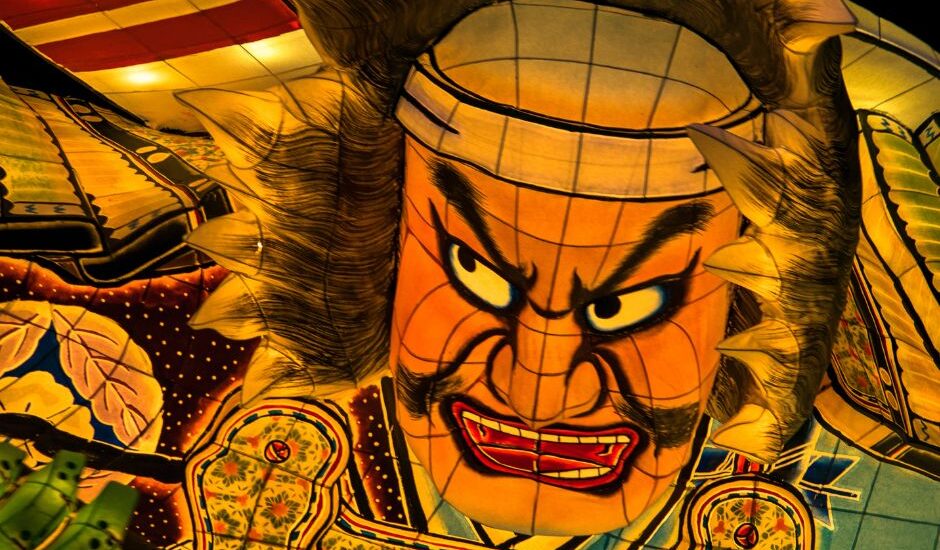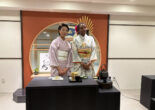Anime, kimono making, washi paper, haiku, and origami are some of Japan’s world-famous arts and crafts that have brought satisfaction and enjoyment to countless people. Let’s take a look at them in detail to give you a better glimpse of Japanese culture and history.

Japanese arts and crafts
Japan is filled with artisans producing masterpieces and utilizing skills passed down for generations. Their work is filled with such passion and backed by a long history, making them truly worthy of being called “art.”
One of Japan’s oldest crafts is pottery and ceramic arts. You have the Arita-yaki from Arita in Saga Prefecture, dating back 400 years when Japanese warlord Toyotomi Hideyoshi sent his troops to Korea, and one of the Korean potters started making pottery from stones he found in Arita. It’s easy to spot Arita-yaki due to the intricate red, blue, and gold designs on white porcelain.
What’s more, many areas in Japan have their own style of pottery worth discovering. You can purchase the pieces as excellent souvenirs (or for personal use) or enjoy a pottery class at many workshops in Tokyo and Kyoto that feature such traditions so you can take home your personal creation.
Moving on to another medium, wooden craftsmanship, such as the Hakone Yosegi Zaiku from Hakone in Kanagawa Prefecture, is a whole new world of artwork with a vast history. Different types of wood are combined to create items like letter boxes, jewelry cases, coasters, and more. You might also be familiar with a secret box known as karakuri-box, which can only be opened if you manipulate the box in the correct order. Some have more than 100 manipulations, giving you a good challenge.

Many cities in Japan also have their unique lacquerware, displaying intricate layers of color and patterns that are both functional and worthy of being treated as a collection.
Fabric, specifically silk fabric known as Hakata-ori from Hakata, Fukuoka Prefecture, features over 800 years of history and tradition. One could definitely feel the quality of craftmanship on the woven threads of kimono belts, bags, pen cases, ties, and other items that use the Hakata-ori fabric.
You might have come across the red, gold, and white doll-looking heads at restaurants and shops in Japan. These are called daruma and are treated as lucky charms to make wishes come true. It is believed that a Buddhist monk committed to meditation for almost a decade that his arms and legs fell off; hence the body-less figurine.
A daruma is sold without eyes because the owner is responsible for filling them in. Once the owner of the daruma makes a wish, the left eye (right eye if you are looking at the doll) should be filled in. Once the wish comes true, the right eye is painted. You can then return the daruma to where you purchased it from as a sign of gratitude or bring it to a shrine.
Another lucky charm is the omamori, which function as amulets for luck and protection to those who carry them around. There are omamori for safety while traveling, productive studying, childbirth, wealth attraction, and more. You can find these charms at temples and shrines across Japan.
Partaking in the process of creating such artwork, supporting the artisans by purchasing their creations, or simply enjoying performances as an audience are some of the ways we can ensure that the culture and traditions live on.

Three highly-refined traditional arts of Japan
We’ve touched on many Japanese arts and crafts; however, there are three highly refined traditional arts of Japan that should be mentioned and even experienced. These are the tea ceremony, calligraphy, and ikebana (flower arranging) or gardening.
Making tea might seem like a simple task, but there is so much more to the “way of tea” that Japanese tradition has to offer. Known as chanoyu or sado, the art of preparing and presenting matcha or green tea called otemae is conducted during formal occasions or as a way to serve and accommodate guests appreciatively.
The history of the tea ceremony dates back to Zen Buddhism in 815 for religious ceremonies at monasteries. It then became a symbol of high social status during tea parties. By the 16th century, drinking tea was enjoyed by the entire Japanese society.
The tea ceremony is governed by principles of harmony, respect, purity, and tranquility. Many precise movements make up the process, from guests taking off their shoes and rinsing their mouths before drinking the tea to the tea master’s way of mixing the tea and serving the cup to the most important guest first.
If you are interested in studying the tea ceremony, there are courses offered at tea schools for anyone who wishes to learn more about this tradition.

Japanese calligraphy, known as shodō, is another popular traditional art that focuses on the way of writing. It is still being taught in Japanese schools from elementary school to university. Japanese calligraphy is all about simplicity, beauty, and a connection between the mind and body.
True calligraphers bring their minds and souls into every stroke, putting their hearts into the character; otherwise, it is considered meaningless. You also only get one chance to write the word properly on paper, as there can be no retakes or erasures, thus giving more emphasis on the idea of putting your entire focus on the task.

Lastly, the centuries-old Japanese art of ikebana, or flower arrangement, is a practice that strives to “make flowers come alive.” Each flower is carefully selected and put together to conjure a specific emotion for an observer, much like a painting or an artwork.
Ikebana has four principles: a fresh approach, movement, balance, and harmony. It also has three elements: line, color, and mass. These are combined to make an already beautiful individual plant into a masterpiece.
Now that you have a glimpse of some of Japan’s arts and crafts forms, plus their backgrounds, you can now enjoy them in a deeper sense should you come across them while traveling across the country.
Related Articles
Wanna Sniff Animal Butts? Visit ATOA Aquarium — The Most Unique Aquarium in Kansai, Japan!
Warning: Undefined array key "sfsi_threadsIcon_order" in /home/veremosglobal/tokyoroomfinder.com/public_html/blog/wp-content/plugins/ultimate-social-media-icons/libs/controllers/sfsi_frontpopUp.php on line 165
Warning: Undefined array key "sfsi_blueskyIcon_order" in /home/veremosglobal/tokyoroomfinder.com/public_html/blog/wp-content/plugins/ultimate-social-media-icons/libs/controllers/sfsi_frontpopUp.php on line 170
Warning: Undefined array key "sfsi_bluesky_display" in /home/veremosglobal/tokyoroomfinder.com/public_html/blog/wp-content/plugins/ultimate-social-media-icons/libs/controllers/sfsi_frontpopUp.php on line 266



